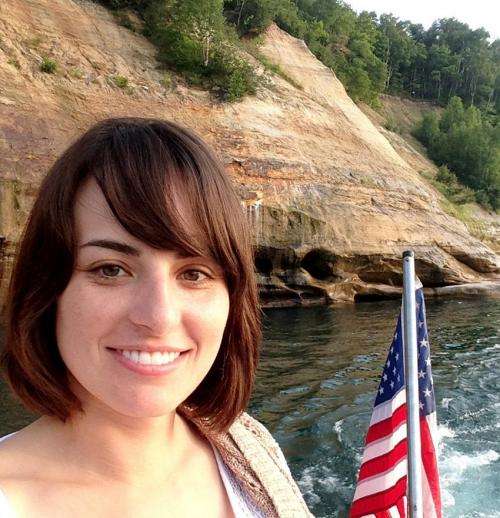Student to live in simulated space habitat

A Purdue University industrial engineering doctoral student is among six "crew members" spending the next eight months in a domed habitat on a volcanic landscape mimicking life on a Martian outpost.
Jocelyn Dunn will participate in the Hawaii Space Exploration Analog and Simulation (HI-SEAS) mission, which begins Oct. 15.
She and five other researchers will live in a habitat located at an elevation of about 8,000 feet in an abandoned quarry on the northern slope of the Mauna Loa volcano on the Big Island of Hawaii. The program focuses on the study of social, interpersonal and cognitive factors that affect team performance during long-duration space travel, such as missions to Mars.
"It's analogous to Mars but translates well to any situation that requires teamwork and a reliance on technology," Dunn said.
She will chronicle her experience in a blog at fivestarview.blogspot.com/
The University of Hawaii at Mānoa leads the study, supported with NASA funding.
Conditions will mimic those of life on a Martian base. The domed structure has a single porthole overlooking lava fields and the dormant volcano Mauna Kea in the distance. When exploring and mapping the terrain, crew members will wear spacesuits as though on Mars. All communications will be delayed 20 minutes to simulate transmissions over the gulf of space.
"There are six of us, and I grew up in a family of six, so the similar dynamics of being in a three-male, three-female household will make me feel at home," said Dunn, 27, who aspires to become an astronaut, an ambition nurtured by a childhood in Florida, home to NASA's Kennedy Space Center.
"I've always been inspired by space exploration," she said. "I was lucky to grow up watching the NASA space shuttle launches. Many people have watched from television but haven't felt the awesome power of a shuttle launch, literally a ground-shaking experience."
During their eight months inside the habitat, the crew will be continuously monitored using surveillance cameras, body movement trackers, electronic surveys and other methods.
Dunn's research specialty is data analytics, using data to support decision-making that can lead to systems improvements.
"During the HI-SEAS mission, I will monitor habitat systems data and develop analytics to optimize crew schedules and mission performance," she said.
Dunn earned a master's degree in biomedical engineering from Purdue in 2011 and a bachelor's degree in aerospace engineering from Embry-Riddle Aeronautical University in 2009.
"Jocelyn was a great student," said her former adviser, Eric Nauman, a professor in the Purdue School of Mechanical Engineering and Weldon School of Biomedical Engineering. "She developed technologies that we are currently using to advance treatment for liver disease and diabetes. She was also a rarity in that she wrote papers, filed patent disclosures and worked on a range of different projects - all for her master's."
The other team members are mission commander Martha Lenio, microbiologist Neil Scheibcell, NASA aerospace engineer Allen Mirkadyrov, University of Idaho graduate student Sophie Milam and engineer Zak Wilson.
More information: Detailed biographies and pictures of the new HI-SEAS crew are available at hi-seas.org/?p=3275
Provided by University of Hawaii at Manoa




















